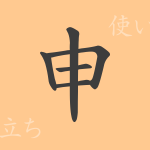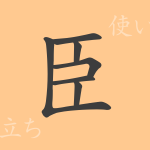The richness of the Japanese language is embodied in its Kanji, each character brimming with emotional and semantic diversity. One such Kanji, ‘伸’, plays a crucial role in depicting actions and states closely linked to our everyday lives, growth, and development. This article explores the Kanji ‘伸’, from its origins to its contemporary usage, and delves into related phrases and idioms to uncover its allure. Join us on a journey to rediscover the depth of the Japanese language through a single character.
Origins of 伸 (のび)
The Kanji ‘伸’ originated from ancient Chinese pictographs, initially representing the action of stretching or extending with one’s hands. This evolved from the combination of ‘延’, symbolizing the hand, and ‘亲’ (modernly written as ‘寸’), indicating an action or effort. Over millennia, this character has become integral to the Japanese language, widely used across various expressions.
Meaning and Usage of 伸
‘伸’ carries meanings such as “to stretch,” “to grow,” and “to expand,” not only in physical terms but also metaphorically. It is used in phrases like ‘expanding possibilities’ and ‘expressing thoughts freely.’ It can also appear in more moral or societal contexts, as in ‘advancing justice.’
Readings, Stroke Count, and Radical of 伸
The Kanji ‘伸’ is beloved for its simplicity yet frequent use in the Japanese language:
- Readings: On’yomi ‘シン’, Kun’yomi ‘のびる’, ‘のばす’, ‘のべる’
- Stroke Count: 7 strokes
- Radical: 亻 (にんべん)
Phrases, Idioms, and Proverbs Involving 伸
Many phrases, idioms, and proverbs include ‘伸’, each enriching the Japanese language:
- 伸展 (しんてん) – To develop or progress.
- 伸長 (しんちょう) – To grow longer or to grow up.
- 自己伸張 (じこしんちょう) – Actively developing and showcasing one’s abilities or values.
- 伸び伸び (のびのび) – To act freely and relaxed, without constraints.
- 伸び悩む (のびなやむ) – To experience stagnation in growth or progress.
These terms are utilized in contexts ranging from personal growth to business expansion and psychological freedom.
Conclusion on 伸
The Kanji ‘伸’ symbolizes both physical and psychological growth and expansion. Its uses span from direct physical actions to the development of personal abilities and societal progress, playing a significant role in Japanese language expressions. This character teaches us the importance of stretching ourselves and expanding our potential.

























